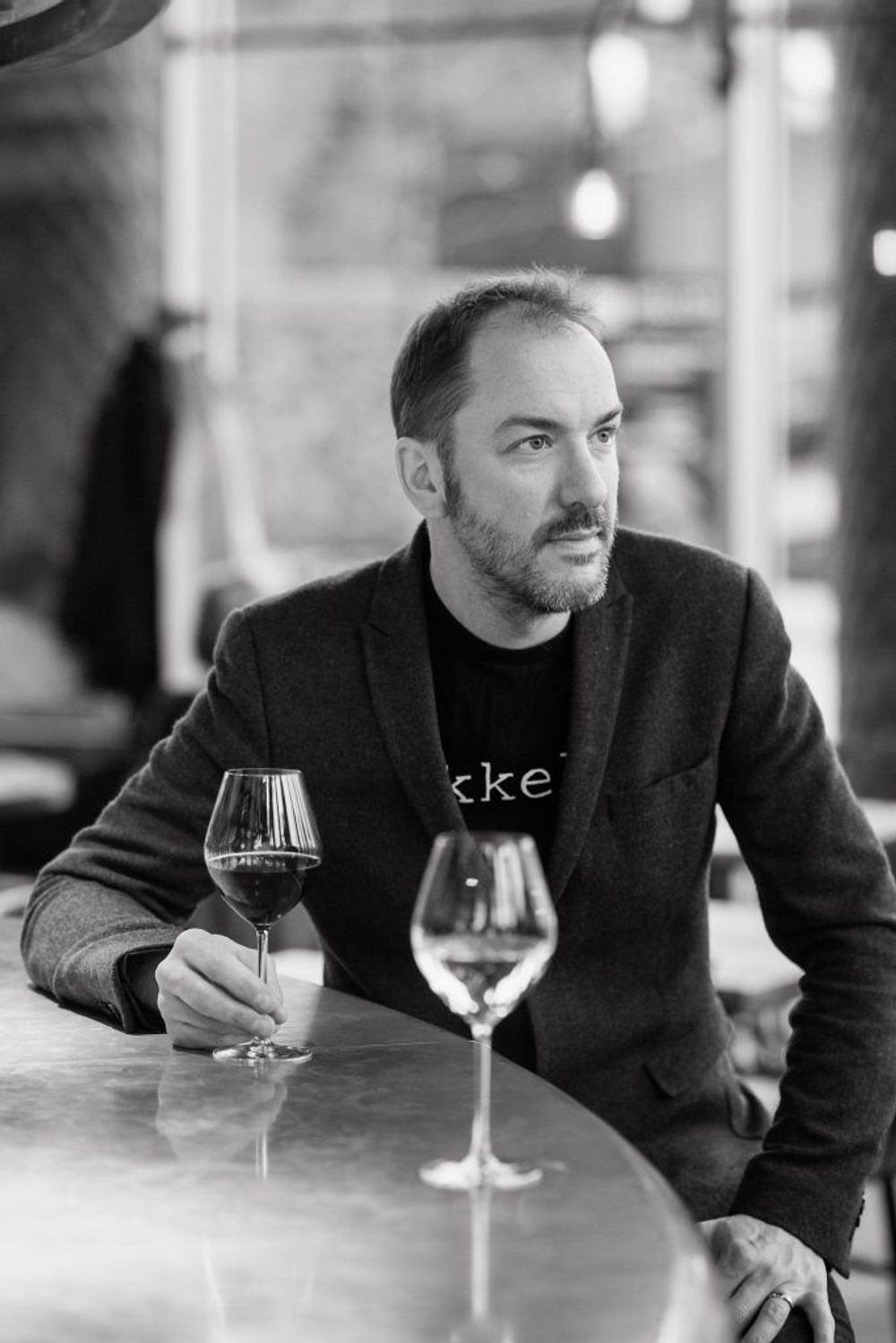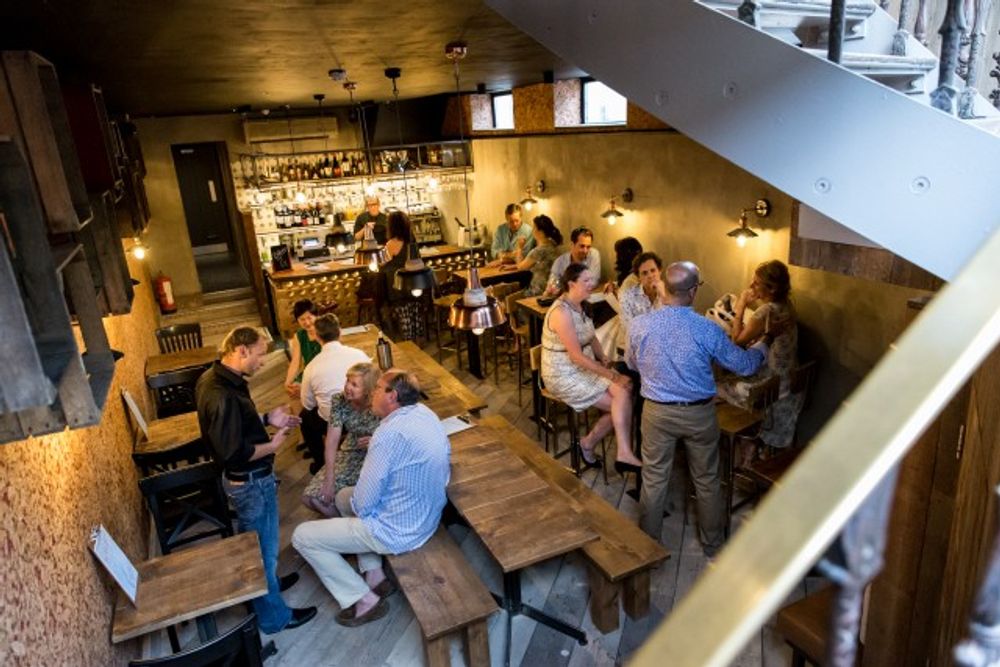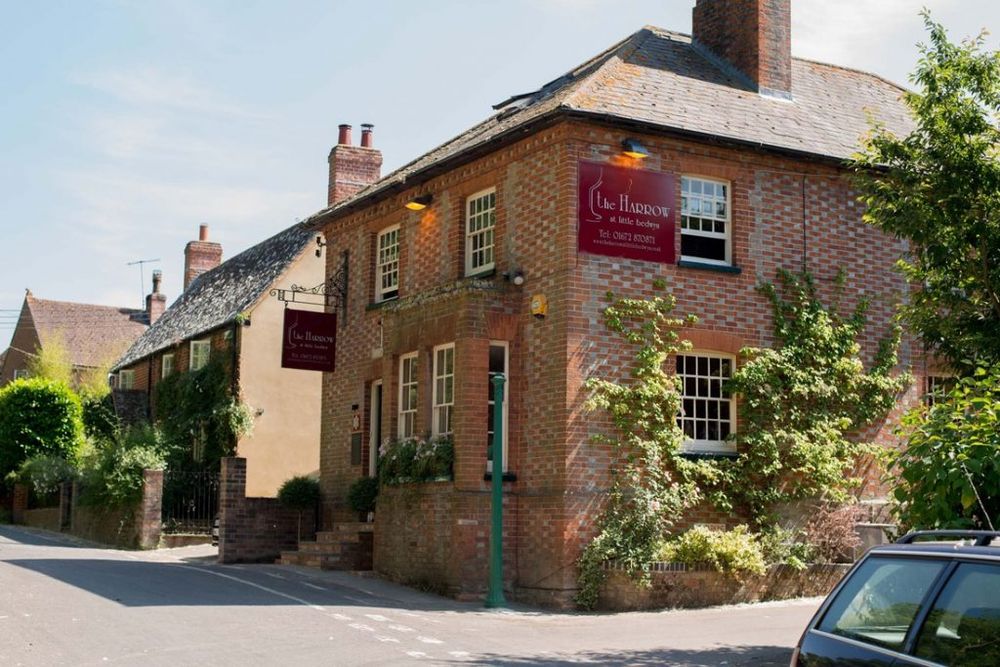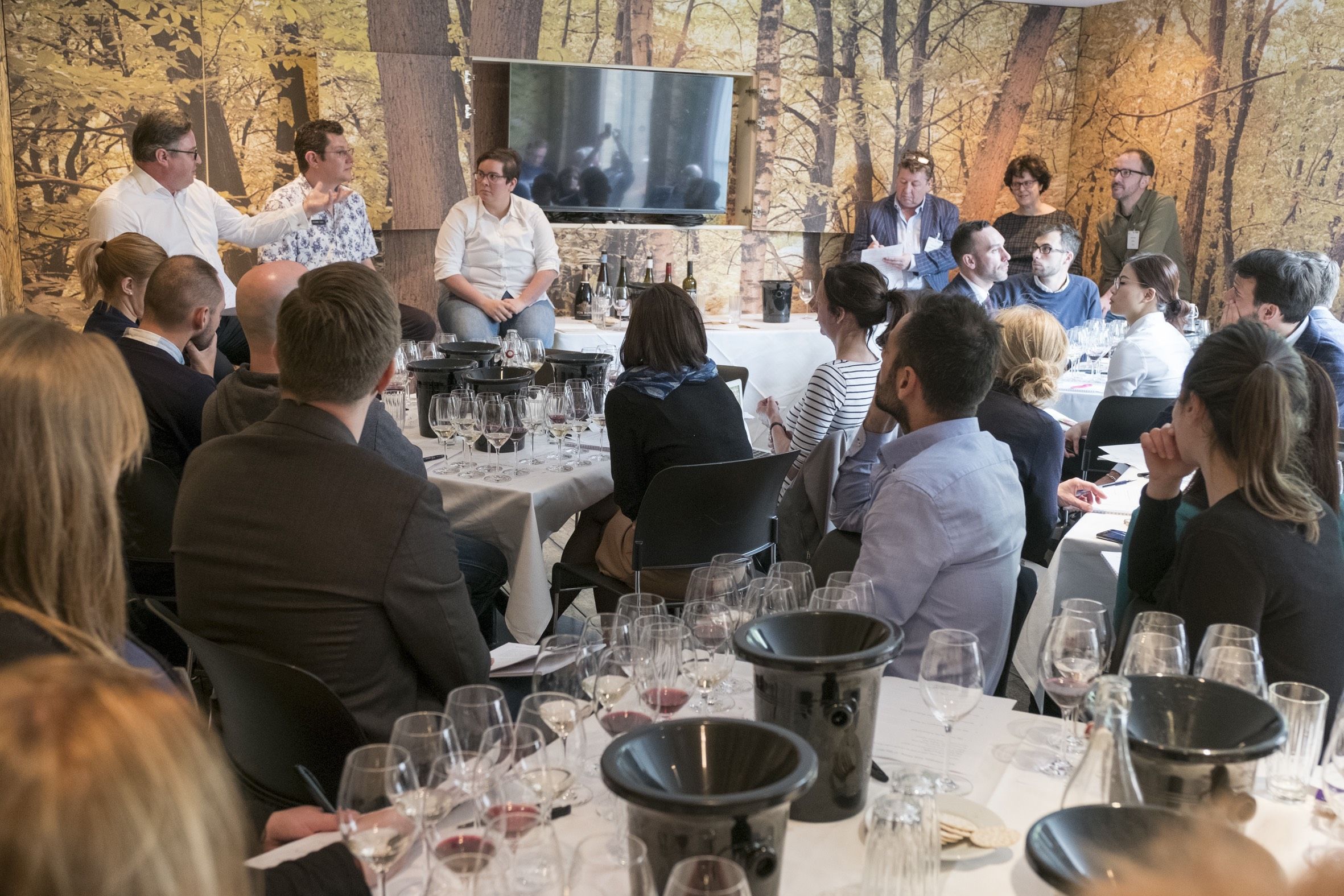Here’s what Roger Jones of The Harrow at Little Bedwyn, Christine Parkinson of Hakkasan, Charlie Young of Vinoteca, Ben Stephenson of Hangingditch and Desiree Russo of Humble Grape think of how well German wines are performing in their outlets.
Any fans of late night political debate will all be aware of the BBC’s irrepressible Andrew Neil and the fun he has ripping the proverbial out of Blue Nun on his show This Week. All good light hearted stuff, but wearing our wine hats, as we do, it also illustrates the ironic, nostalgic image that many of an older (sorry Andrew) generation have towards German wine in the UK.
Back in the good old seventies and early eighties German wine really ruled the roost. Think Aussie Chardonnay or Chilean Merlot status in the speed at which it disappeared of supermarket shelves. In fact so popular was German wine that up to 55% of its wine by volume and just under 50% by value came to the UK (AAWE/Comtrade) in 1991.
But sadly for the Germans the rise of the New World would take away much of its market share, particularly those at the all grabbing entry level supermarket price points. So much so that the Germany’s presence in the UK has gone full circle.
It is now almost non-existent below £7, but very much on the agenda when it comes to filling restaurant wine lists higher up the pricing ladder. Overall only around 10% of its wine now comes to the UK, also accounting for about 10% of its value (AAWE/Comtrade).
Pushing premium
And that is exactly how Germany likes it. There is enough people back in Germany willing to have their fill of all the stuff that used to head our way. Leaving the focus very much on Germany’s premium wines.
Which going by the buzz and excitement that surrounded last week’s Wines of Germany annual tasting in London is also what key buyers are looking for.
But tasting wines at a trade event is one thing, actually listing them is another. Which is why The Buyer teamed up with Wines of Germany to host a panel debate during last week’s tasting where buyers could hear first hand from leading restaurant and wine bar operators about what German wines mean to them and their customers.

The on-trade debate was the chance for buyers to hear from buyers about what is selling well in the UK premium on-trade
Taking part were Christine Parkinson, head of wine for the growing international Hakkasan group, Charlie Young, one of the co-founders of Vinoteca, Roger Jones, owner and chef at the Michelin-starred The Harrow at Little Bedwyn, Ben Stephenson, owner of Hangingditch wine merchants and wine bar in Manchester and Desiree Russo of Humble Grape, the burgeoning London wine bar and merchants business in London.
They were quite clear. To make it with German wine in the UK you have to take risks. You need to be bold in your buying and not just stick to price points and simple, safe wines.
Elsewhere on The Buyer we are constantly talking to producers from all over the world and their importers in the UK about the great opportunity there is to really engage with customers with wine, providing you have something interesting and even challenging to offer.
Which is what Germany is all about. Charlie Young at Vinoteca said the average customer may not sit down thinking about German wines, or even be very knowledgeable about them, but pushed in their right direction then they rarely get any kick back.
The hand sell

Charlie Young says you have to make an effort to sell premium German wine Picture: Matt Grayson
It is more about showing them a wine, telling them they will love this new Pinot Noir they have found and then letting them know it comes from Germany, said Young.
Roger Jones certainly believes in that. He said he will often talk to his guests and take them out a bottle of wine and ask them to try it. Whilst they may not always voluntarily choose to buy a German wine from its list, once they are shown a wine, and see how well it goes with his food then it is quite often to see people spending £80 to £90 on a bottle of German wine quite happily.
For Russo German wines really give you the chance to show your passion and emotion about wine to your customers. With the best will in the world if you list a German wine you have to sell it for yourself. It is not going to jump out, she added. But get behind them, talk passionately about the wine and you have listed it and people will happily give them a go and come back for more, she stressed.
Show off your range
Ben Stephenson at Hangingditch said German wines are also a great way to illustrate to your customers about how different, exciting and interesting your wines are. He said he liked to think Hangingditch’s reputation amongst its customer base is for doing exactly that and Germany plays a really important part in that.

Hakkasan: the perfect setting for premium German wine
Christine Parkinson admitted the Asian and Chinese influence of Hakkasan lends itself to German wines. But that does not mean customers will naturally buy them. Again she said it is a combination of being brave enough to list certain wines, and having the confidence in your team to then be able to talk to customers and suggest wines for them to try with certain dishes.
By the glass

By the glass is key for Humble Grape
It is why German wines work particularly well for all the panellists by the glass. It is a lot easier for a customer to take a punt on a glass rather than a full bottle, said Stephenson.
Russo agreed and said that with Humble Grape they have a lot of younger customers who are more than willing to take advice and go with suggestions by the glass.
But it is also a great way to show the diversity of German wines and also introduce people to unusual grape varieties, said Young.
When Vinoteca took the step to introduce wines from keg a few years ago it did so with a German Riesling as not only was quite happy offering
Noticeably none of the panellists brought up any issues in terms of the old fashioned, Andrew Neil approach to German wines. Admittedly they all come from venues that are going to attract your wine enthusiast willing to experiment.
More approachable
If there were any challenges to selling German wine they rest more in how approachable they are both to customers and for staff. Young said it clearly makes sense for them to lean more towards those wines that are easy to pronounce and urged German producers to think more about the environment where their wine might be being sold. That said it does sell and list its fair share of varieties like Weissburgunder and Scheurebes, but it is not always easy.
Parkinson said the will was certainly there to get behind varieties such as Silvaner, but in the cut and thrust of wine buying for major groups where every wine has to earn its place it is not always possible.
Where Germany is and can win with its more unpronounceable grape varieties is through its label design. The panel also noticed how much more daring and exciting labels from Germany were becoming and that even the old school, more fairy story-style labelling with landscapes of castles and green fields now had their own kitsch appeal.
Opportunity for reds

Roger Jones is happy to be working far more with German wines at the Harrow at Little Bedwyn
Which is why the panellists were also so pleased to see the huge steps being taken in the quality of Germany’s red wines, and in particular Pinot Noir, which they were all agreed have now become must stocks. For them Pinot Noir could be the ideal way to bring more people in to German wines.
Not only is it a universally well known grape variety, but Germany has its own distinct, food friendly style with both the depth of flavour and lightness of touch that comes from the northern hemisphere.
Jones said he has been really excited by the quality of the red wines he has seen from Germany and again with his chef’s hat on they are also well nuanced to sit alongside delicate flavours, working with rather against the food.
Russo admitted that which German wines end up being sold often lies in the passion and interest level of the member of staff serving a particular table.
So what is selling in premium on-trade outlets? To find out we asked each of the panellists to bring along a wine that they felt best demonstrated the kind of wine that they are currently successfully selling in their respective outlets.
It made for a fascinating tasting flight for rather than in the average masterclass where you tend to get the chance to taste the best of the best, here we were able to see the kinds of wines that are being listed and more importantly selling.
Panel tasting
The different panellists chose the following:
Roger Jones: Pfalz, NV, Sekt, Reichsrat von Buhl
Desiree Russo: Pfalz, 2015, Riesling Paradiesgarten, Von Winning
Charlie Young: Rheinhessen, 2016, Merlot Blanc de Noir ‘Pfandturm’, Dr Köhler
Ben Stephenson: 2015, Gewürztraminer, Villa Wolf
Ben Stephenson: Pfalz, 2015, Pinot Noir, Villa Wolf and Pfalz
Christine Parkinson: Pfalz, 2015, Cuvée, Black Print, Markus Schneider
Going through the tasting Jones said this style of Sekt really put Germany in a unique place and for him as a restaurateur offers something very different to guests for a sparkling wine that can go so well with food.
For Russo Riesling will always be the benchmark for Germany and this is just an outstanding value for money Rielsing. A real crowd pleaser and the one you will find yourself buying if you are served by her at Humble Grape.
Young wanted to demonstrate how unusual styles, like this Merlot Blanc de Noir, can really work effectively for wine bars, and particularly for a by the glass offer.
Stephenson brought a couple of examples, a red and a white. First up was a Gewürztraminer which again is a grape variety that has resonance and a connection with consumers if buyers are willing to list it. He also showed a style of Pinot Noir that he believes shows what Germany can do so well for an outlet like Hangingditch. A lovely, easy drinking wine, also ideal for by the glass but also challenging and interesting for his customers.
Parkinson’s choice demonstrated both the quality in winemaking, depth and subtlety in flavour, but also the daring packaging that we are seeing more from Germany.
For any country to do well in the UK on-trade it relies enormously on finding and nurturing ambassadors on the front line as it were to sell their wines. They could not get any better than the famous five on our on-trade panel. Particular thanks goes to them for their time and passion and excitement in bringing their German wine offers to live.































